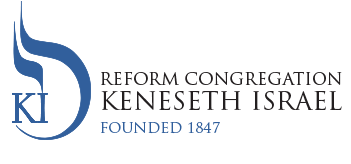In September of 1938 Britain and France agreed to Hitler's demands and
signed the Munich Agreement which gave Hitler the German speaking border regions of Czechoslovakia. Jews in the region quickly fled, leaving their synagogues behind. The following November synagogues across the expanded Germany were burned, vandalized and looted. In almost every case the ritual treasures of these synagogues were destroyed or lost.
In the remainder of Czechoslovakia, which included Prague, the synagogues and their swollen congregations were safe for the time being, and there was no programmed destruction, even when the Germans invaded the rest of the country in March 1939. In 1940, the congregations were closed down and in 1941 the first deportations started. The mass deportations of Jews took place throughout 1942 and into January 1943.
The Nazis also took action to liquidate the communal and private Jewish property in the towns, including the contents of the synagogues. In 1942 all Jewish communities were instructed to send the contents of their synagogues to the Jewish Museum in Prague. Torah scrolls, gold and silver ornaments and ritual textiles were sent, along with thousands of books.
The inventory of the Prague Jewish Museum expanded by fourteen times as a result, and a number of remaining Jews were put to work by the Germans to sort, catalogue and put into storage all the items that had come from over one hundred looted congregations. The effort filled over forty warehouses, including many deserted Prague synagogues. Once the task was completed, the Jews who had been forced to do this work were themselves deported to the Terezin concentration camp and death. There were few survivors.
It was once accepted that the accumulation of this vast hoard of Judaica was intended by the Nazis to become a museum to the extinct Jewish race. There is, however, no evidence that any such museum was ever planned.
After the defeat of Germany, a free and independent Czechoslovakia emerged, but it was a country largely without Jews. Prague, which had a Jewish population of 54,000 in 1940, was reduced to under 8,000 by 1947, and many of these were to leave. In February of 1948, after less than three years of post war freedom, the Communists staged a coup and took over the government of Czechoslovakia. The Prague Jewish Museum came under government control, and was staffed mainly by non-Jewish curators.
In the early 1960s, Eric Estorick, an American art dealer living in London, paid frequent visits to Prague, seeking the work of local artists to exhibit at his Grosvenor Gallery. He eventually came to the attention of officials from Artia, the state corporation that had responsibility for trade in works of art, and was asked if he would be interested in buying some Torah Scrolls. The State of Israel had been approached previously with a similar offer, but the negotiations had come to nothing.
Estorick was taken to the Michle Synagogue where he was faced with wooden racks holding almost two thousand ill kept Scrolls that had been stored there for almost twenty years. When asked if he wanted to make an offer, he replied that he knew certain parties in London who might be interested.
On his return to London, he contacted Ralph Yablon, a well-known philanthropist with a great interest in Jewish art, history and culture. Yablon became the benefactor who put up the money to buy the Scrolls.
First, Chimen Abramsky*, (an acknowledged authority on Hebraica and Judaica and later Professor of Hebrew Studies at the University of London), was asked to go to Prague in November 1963 to examine the Scrolls and to report on their authenticity and condition. On his return to London, it was decided that Estorick should go to Prague and negotiate a deal, which he did.
In February 1964 two lorries laden with 1,564 Scrolls arrived at London's Westminster Synagogue. There they were housed in numbered cradles in specially constructed racks, while the work of inspection and classification was undertaken. Each scroll was expertly examined and a record made of the condition of the parchment, the state of the calligraphy, and (so far as these could be ascertained) the age and place of origin of the Scroll. Many of the labels attached more than 20 years before had survived and provided valuable information; and in some cases despairing messages were concealed in the Scrolls
After months of sorting, examining and cataloguing each Scroll, the task of distributing them began, with the aim of getting the Scrolls back into the life of Jewish congregations across the world. The Memorial Scrolls Trust was established to carry out this task.
Each Memorial Scroll is a messenger from a community that was lost, but does not deserve to be forgotten.
*Chimen Abramsky's preliminary examination of about 250 scrolls found them without protective covering. Others were swathed in tattered prayer shawls. He found two scrolls wrapped in a woman's garment. Another was tied with a small belt from a child's coat. "It was quite incredible to see this," Abramsky said in London. "I burst into tears."
Memorial Scrolls Trust
Kent House
Rutland Gardens
London SW7 1BX
United Kingdom
http://www.memorialscrollstrust.org/
info@memorialscrollstrust.org
------------------------------------------------------------------------------------------------------------
The Temple Judea Museum
Reform Congregation Keneseth Israel
8339 Old York Road, (SE corner Township Line Road)
Elkins Park, PA 19027
(215) 887-2027, (215) 901-2656
TJMuseum@kenesthisrael.org Director/Curator: Rita Rosen Poley; Chair: Karen Shain Schloss
